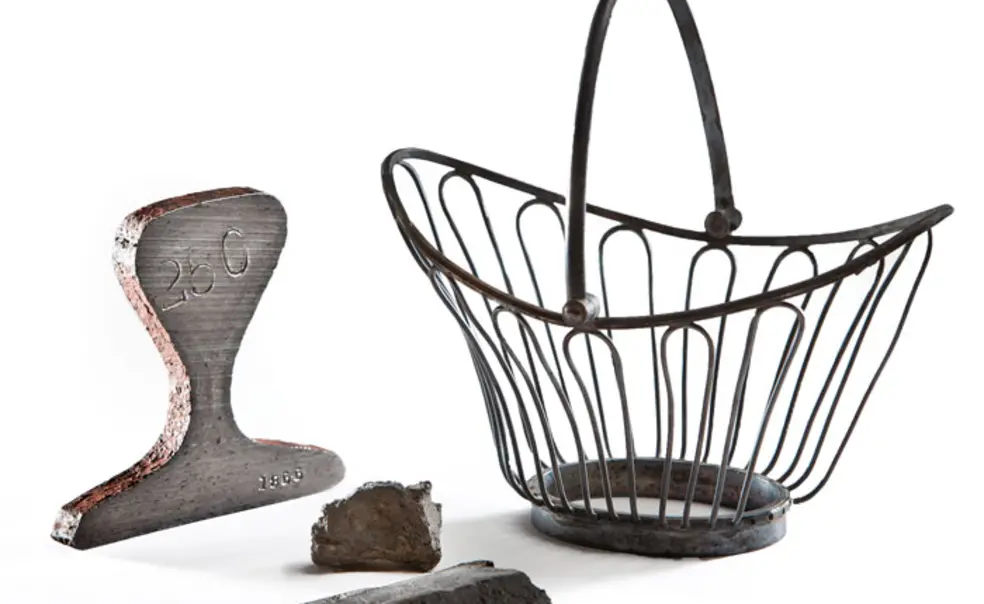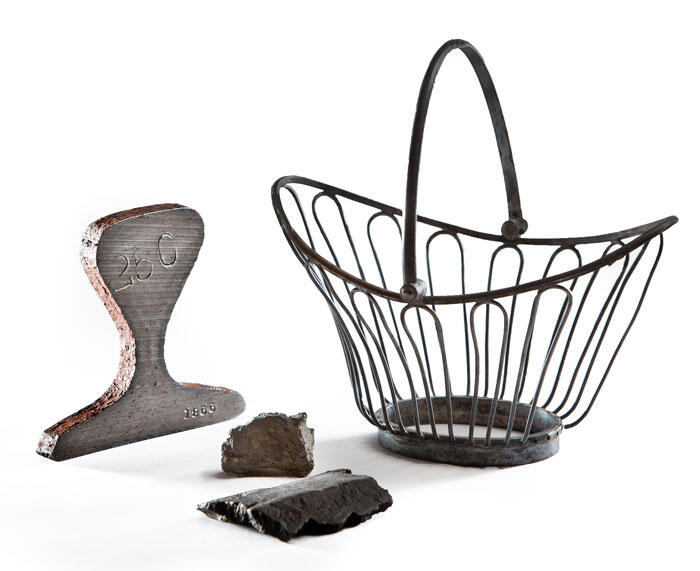From Princeton’s vault: When Nassau Hall burned
What: On a stormy March evening in 1855, a burning log fell out of a stove door in Nassau Hall, in the room of an undergraduate who had stepped away for a conference at Maclean House. Soon the whole building was enveloped, fire lighting the sky for miles around. Students dashing out with furniture were blasted by water from the local fire engine. The historic college bell would be found in pieces amid the ruins.
Top Philadelphia architect John Notman rebuilt Nassau Hall, retaining the original stonework. Inside, he supported the new floors with fireproof wrought-iron beams and brick arches. Utilizing cutting-edge technology, he ordered the beams from Cooper & Hewitt’s Trenton Iron Co., which then was diversifying beyond the production of railroad rails by turning out structural rails that could be used in buildings — a critical step in the history of the I-beam, that fundamental component of modern architecture.
A section of one of the beams is pictured here, along with two fragments of the college bell and a rescued sugar basket.
Extremely rare examples of early structural iron, these primitive I-beams still support the floors of Nassau Hall, 156 years after a student’s carelessness caused disaster.
Where: Collection AC53, Mudd Manuscript Library












No responses yet